Olympus FE-250 Review
Olympus FE-250
We gave its kid brother a bit of a kicking, so it's come round to sort us out
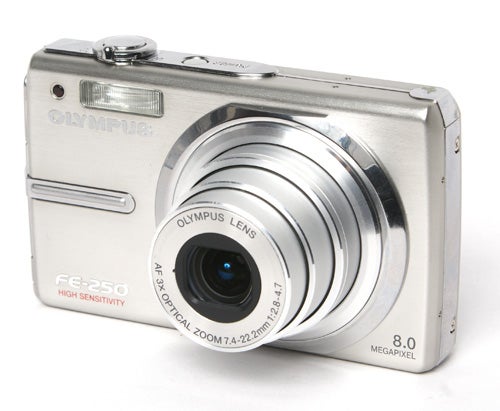
Verdict
Key Specifications
- Review Price: £150.00
Just over a month ago I reviewed the Olympus FE-230, a sub-£100 entry-level 7-megapixel compact camera with a minimal set of features. I was as bit disappointed with it, and only awarded it an overall four out of ten, so I wasn’t expecting much from its big brother, the 8-megapixel FE-250. However I was pleasantly surprised to discover that an extra £50 buys a much better camera.

Although the two cameras do look superficially similar the FE-250 has a superior specification in almost every respect. As well as having and extra megapixel of resolution, the sensor is of the larger 1/1.8-inch type, offering potential advantages in dynamic range, colour depth and image noise reduction. The LCD monitor is still 2.5 inches, but has double the resolution at 230k pixels, a good anti-reflective surface and Bright Capture technology. The lens has 3x optical zoom, but it has the far more useful zoom range of 35 – 105mm equivalent and a faster maximum aperture of f/2.8 – 4.7. Both cameras are safely into the ultra-slim category, but the all-metal case of the FE-250 is slightly larger, measuring 94.0 x 56.5 x 21.5mm, and slightly heavier, weighing 115g minus card or battery.
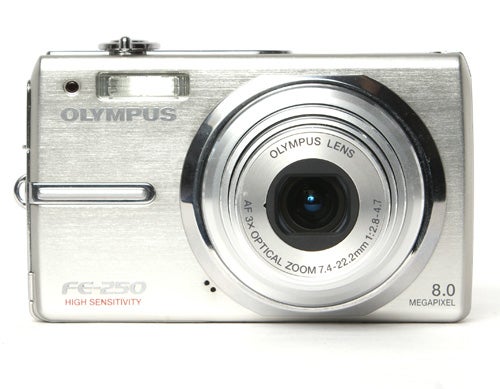
The list of features also shows a strong family resemblance, but the FE-250 does have one special party trick of its own. Where the FE-230 had auto-only ISO setting, the FE-250 not only has manual ISO settings, but the maximum ISO is an astonishing 10,000 ISO. I don’t know of another digital camera, either compact or DSLR, that has such a high maximum sensitivity. It may only be available at the 2048 x 1536 (3 megapixel) image size, but it’s still nearly four times the maximum sensitivity of most other compacts.
Given that extraordinary feature it’s kind of hard to say with what exactly the FE-250 is competing. As far as rivals go, probably the closest match would be something like the Pentax Optio M30 (£125), or the Nikon CoolPix S200 (£123) that I reviewed last week, although the Olympus has a better specification than either of those two cameras. Considering that it is available for around £150 it’s starting to look like a bit of a bargain.
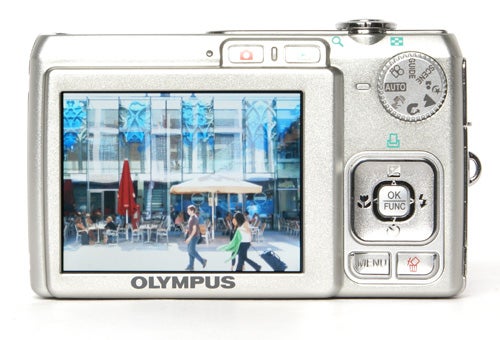
It is sold as an entry-level camera, and apart from that massive maximum ISO the rest of its features are strictly point-and-shoot compact stuff, with its simple rotary mode dial home to just eight settings. These include full auto, portrait, night portrait and landscape program modes, a scene mode with ten scene programs, a shake-reduction mode that simply sets a higher ISO to produce faster shutter speeds, and a movie mode offering VGA at 30fps. Like the FE-230 it also has the useful guide mode, which helps beginners cope with unusual circumstances by automatically adjusting the camera.
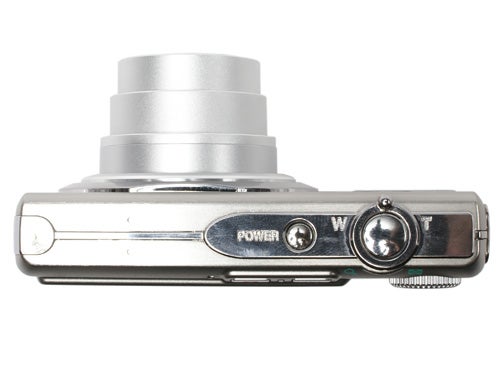
Olympus has decided that it has a “one button, one function design principle”, and it is certainly embodied by the FE-250. The external controls are also minimal, which makes the camera extraordinarily easy to operate. The main menu is also virtually bare, with image size and quality options (only five choices), ISO setting and drive mode, which can be accessed directly from shooting mode anyway, sound recording and panorama stitching mode. There are the usual camera set-up options such as language, date and time and memory card formatting, but that’s about it. One uncommon but useful feature is pixel mapping, which can remove any dead pixels, but one thing notable by its absence is the ability to turn off digital zoom.
Perhaps because of its simplicity the FE-250 handles and performs extremely well. The position of the mode dial means that it doubles as a thumb grip, and despite its slim profile the camera is very secure and comfortable to hold. The zoom control is a rotary bezel around the shutter button, and although the zoom action is stepped, it has at least nine increments between wide and telephoto. One thing I wasn’t so keen on though was the minimal pause at the end of the zoom range before moving into picture-ruining digital zoom territory. Another minor concern is the position of the flash, which is positioned to the right of the lens. Maybe it’s just my notoriously huge hands, but I found that I had to take care not to get my fingers in front of the flash.
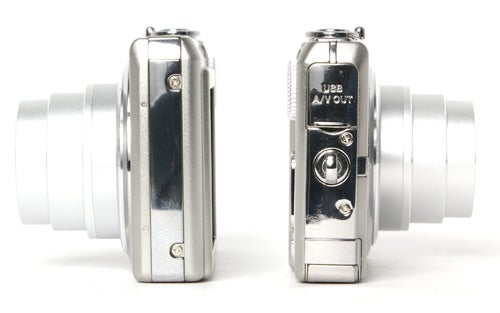
In terms of physical performance the FE-250 mostly does very well. It starts up in a little over two seconds, which is better than average. The AF system may be the same as the FE-230, but for some reason it seems to operate slightly more quickly. In good light it will focus in under a second, and copes quite well with low light. Despite its lack of an AF assist lamp I found it would focus reliably in a darkened room, although it was a little slower than in good light. In single-shot mode the shot-to-shot cycle time is a bit slow at around four seconds. It does have a high-speed continuous shooting mode as well, capable of firing at approximately five frames a second, but only in 3-megapixel mode.
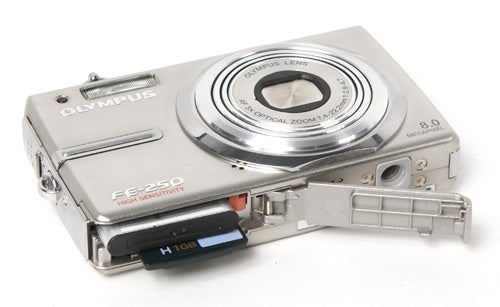
The biggest difference between this camera and the FE-230 is in picture quality, and the improvement is astonishing. Since the difference in sensor size could account for the apparent difference in focal length and f-number, I’ve been trying to determine if the lens is actually the same one as the FE-230. It certainly looks very similar, so I can only conclude that it is much better suited to the 1/1.8-inch sensor, because the dreadful pincushion distortion at the telephoto end is completely absent, and even the wide-angle barrel distortion is greatly reduced. That amazing 10000 ISO setting is a bit of a gimmick, and unsurprisingly pictures shot at that setting look terrible, but the fact it can take a picture at that sensitivity at all is impressive. At the other end of the ISO scale the image quality is very good indeed, and in fact noise doesn’t really become a problem until 1600 ISO, when the noise reduction system goes into overdrive and scrubs out a lot of fine detail. In all other respects the image quality was as good as any 8MP camera I’ve seen, and significantly better than most.
”’Verdict”’
With the FE-250, Olympus has redeemed many of the black marks gathered by previous models in the series. For a very reasonable price it offers excellent build quality, decent performance and excellent picture quality, while maintaining the simplicity and ease-of-use for which it was designed.
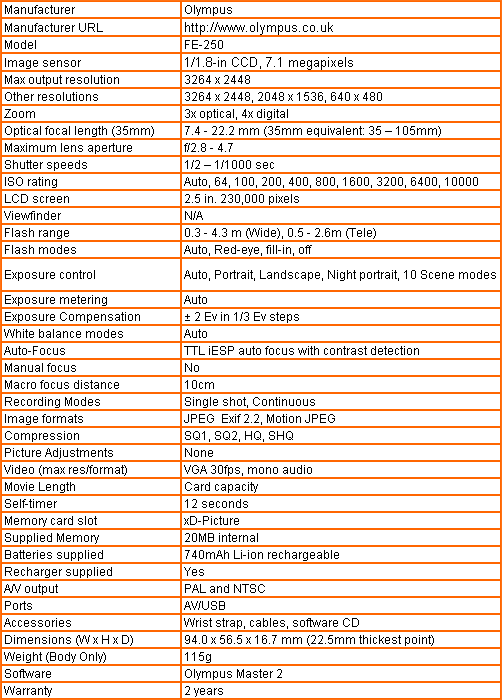
”Over the next few pages we show a range of test shots. On this page the full size image at the minimum ISO setting has been reduced to let you see the full image, and below that a series of full resolution crops have taken from original images at a range of ISO settings to show the overall image quality.”
—-
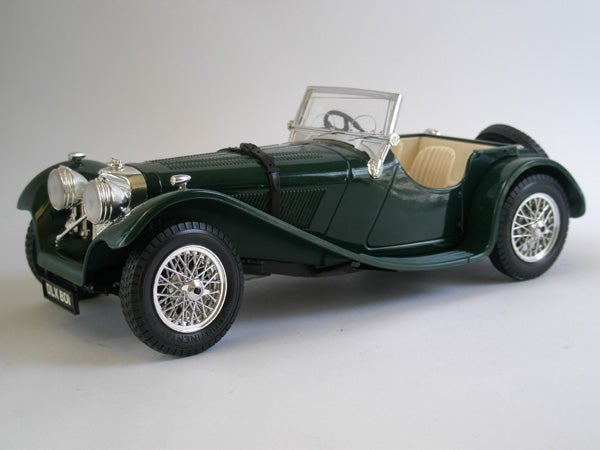
—-
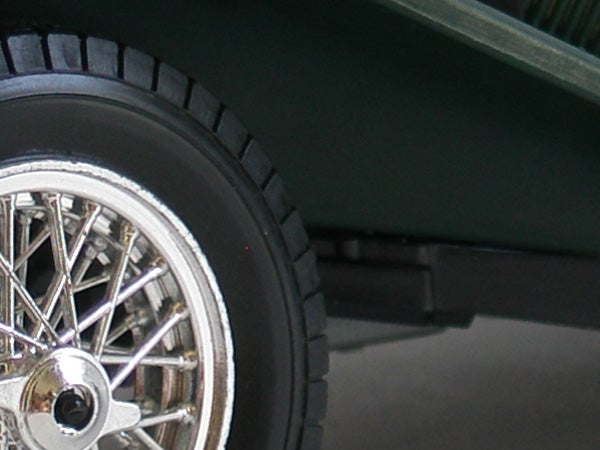
At the minimum ISO setting of 64 the image quality is excellent, although you’ll notice a dead pixel in this and following shots. The pixel-mapping function was able to correct it though.
—-
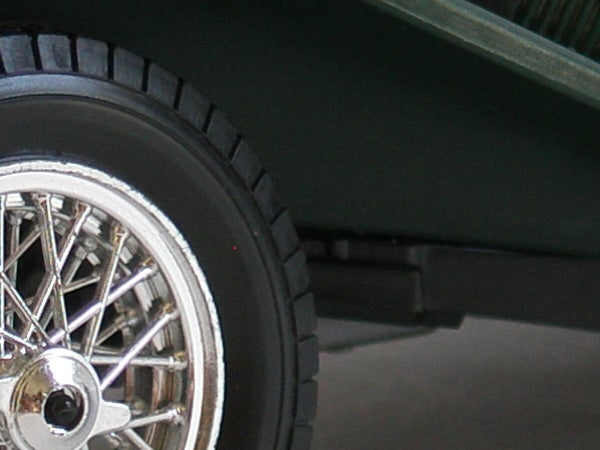
Still nice and clean at 100 ISO.
—-
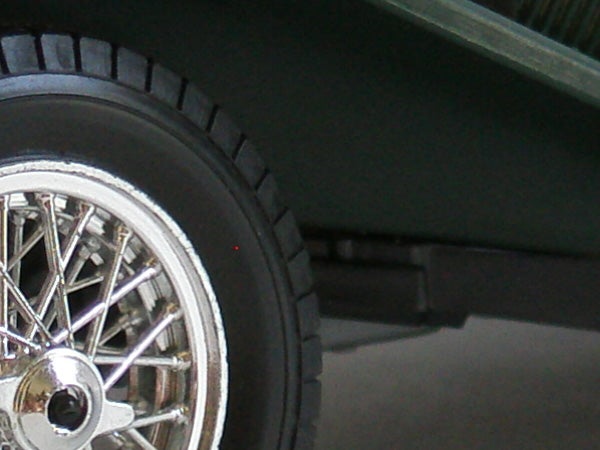
No problems at 200 ISO.
—-
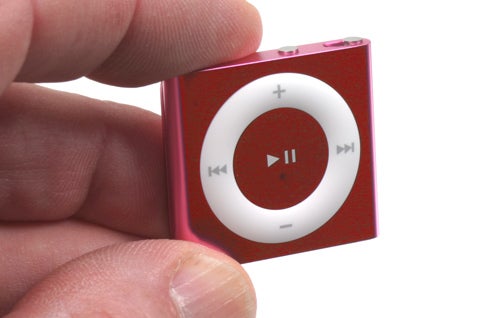
A little noise showing at 400 ISO, but nothing serious.
—-
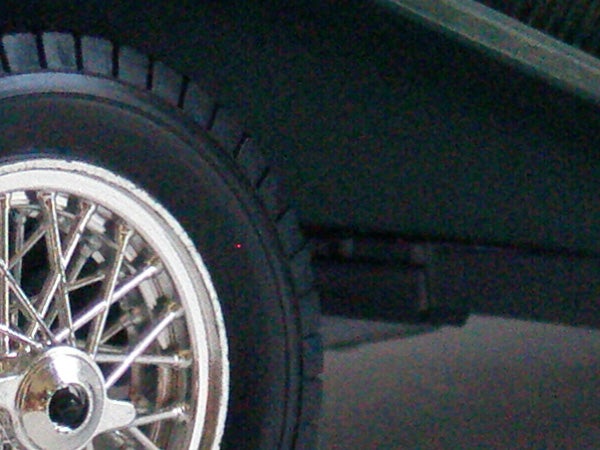
At 800 ISO the noise is worse, but still printable.
—-
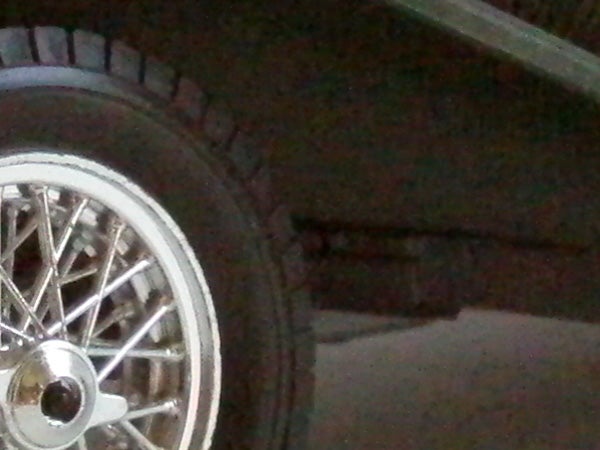
The noise reduction suddenly kicks in at 1600 ISO and image quality takes a nose dive.
—-
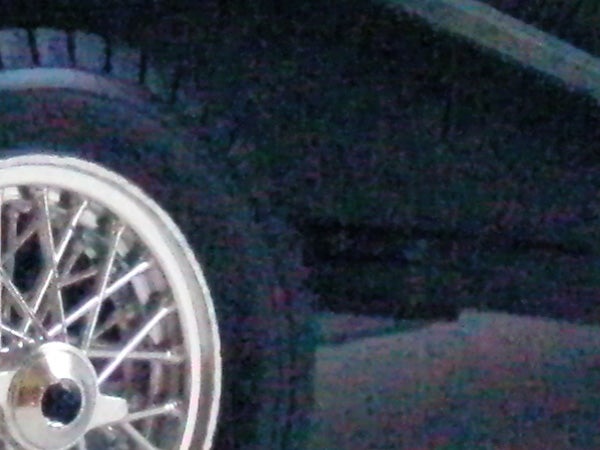
Looking pretty ropey at 3200 ISO, the highest full-resolution setting.
—-
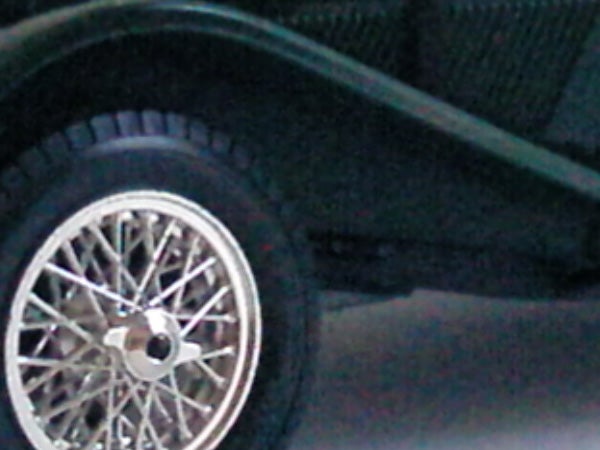
6400 ISO is available at 3 megapixels, but looks a bit cack.
—-
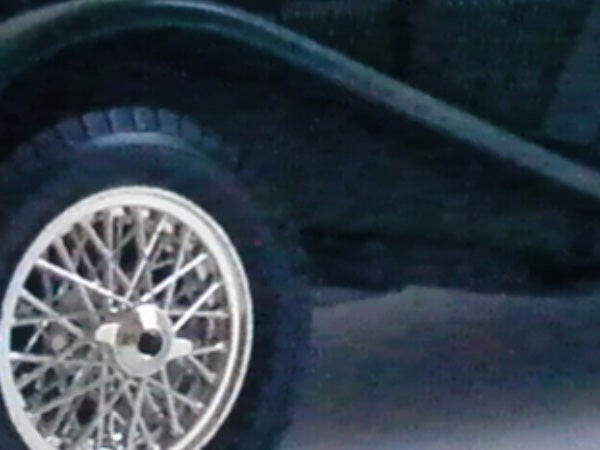
There aren’t any other compacts that can shoot at 10,000 ISO, and here’s why.
—-
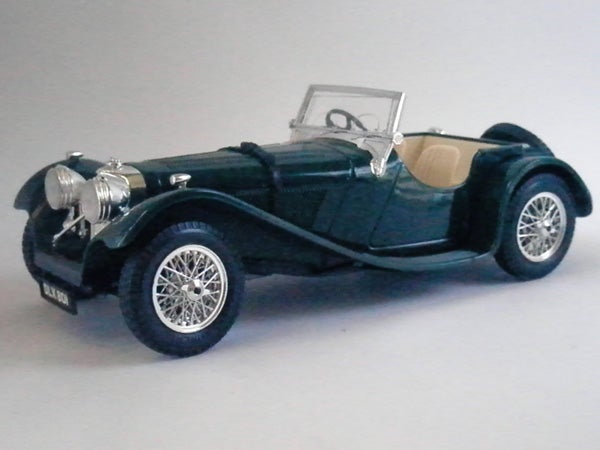
Here’s the full-frame image at 10,000 ISO. It’s horrible, but the fact it can do it at all is amazing.
—-
”A range of general test shots are shown over the next two pages. In some cases, the full size image has been reduced for bandwidth purposes, and a crop taken from the original full resolution image has been placed below it to show the overall image quality. Some other pictures may be clicked to view the original full-size image.”
—-

Here’s my usual detail test shot, the West Window of Exeter Cathedral. See below for a full res crop, or click to see the whole picture.
—-
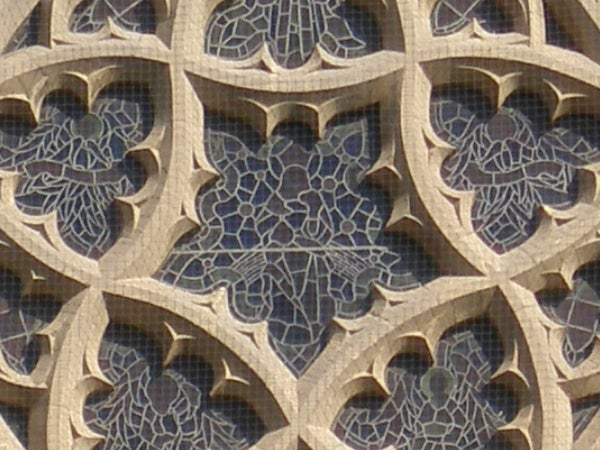
The level of detail is very good for a camera in this price range.
—-

Virtually no barrel distortion at the wide-angle end.
—-
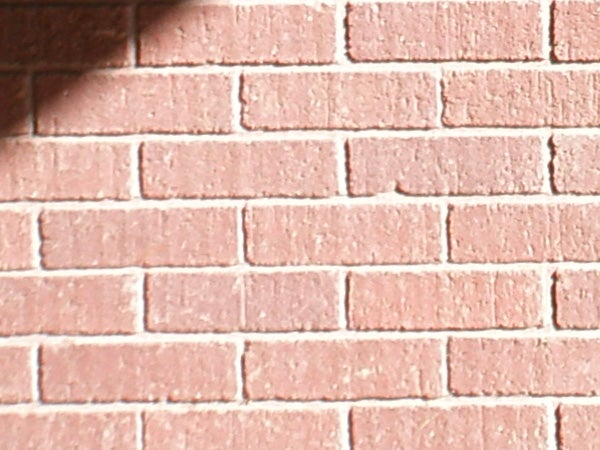
Corner sharpness is good too.
—-
”A range of general test shots are shown over the next two pages. In some cases, the full size image has been reduced for bandwidth purposes, and a crop taken from the original full resolution image has been placed below it to show the overall image quality. Some other pictures may be clicked to view the original full-size image.”
—-

—-

—-
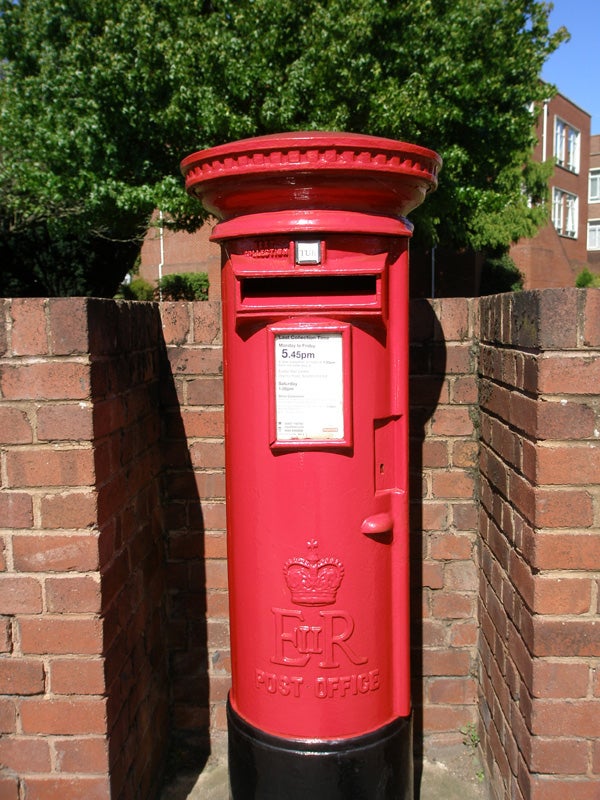
—-

—-
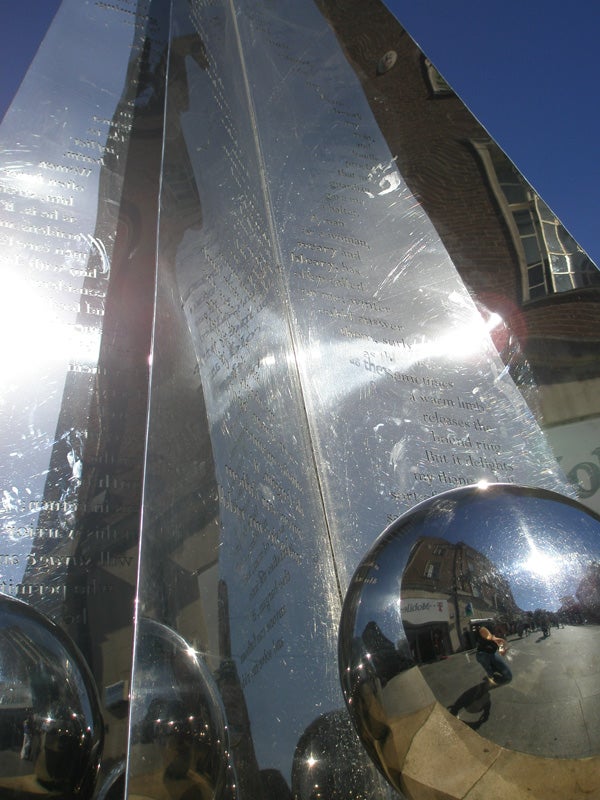
—-
Trusted Score
Score in detail
-
Value 8
-
Image Quality 8
Features
| Camera type | Digital Compact |
| Megapixels (Megapixel) | 8 Megapixel |
| Optical Zoom (Times) | 3x |
| Image Sensor | CCD |
| Image Stabilisation | Electronic |
| LCD Monitor | 2.5 in |
| Flash modes | Auto Flash, Red-eye Reduction, Flash OFF |
| Video (max res/format) | 640 x 480 |
| Memory card slot | xD-Picture Card |

